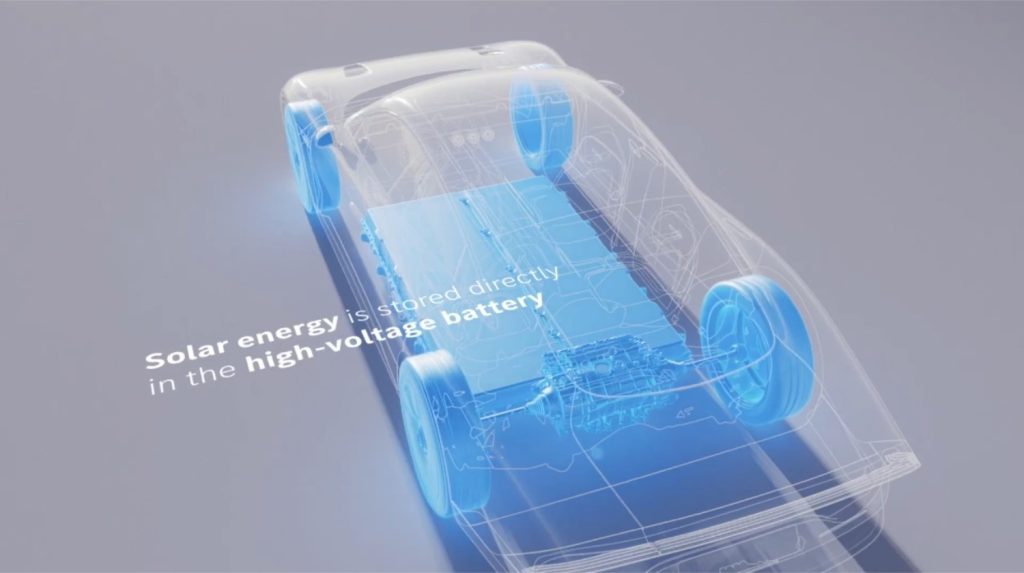The autonomy of 100% electric vehicles continues to be the major focus of the automotive sector, which has been heavily investing in the development and research of solutions to increase the autonomy of its electric models.
In this regard, Mercedes-Benz has now revealed some technologies it is developing, aimed at shaping the mobility of tomorrow for a better quality of life and road safety.

Among the research technologies from Mercedes-Benz is a new type of solar modules that could be continuously applied to the body of electric vehicles – similar to a thin layer of paste.
The active photovoltaic surface, which is expected to be only five micrometers thick, can be applied to any substrate. The solar cells have a high efficiency of 20%. An area of 11 square meters (equivalent to the surface of a medium-sized SUV) could produce energy for a range of up to 12,000 kilometers per year under ideal conditions.
The energy generated by the solar cells is used to drive or directly charge the high-voltage battery. “The photovoltaic system is permanently active and also generates energy when the vehicle is turned off, and any excess generated can potentially feed directly into the home grid through bidirectional charging,” Mercedes-Benz clarified.

The German brand believes “that in the future this technology could be a highly effective solution for increasing electric range and reducing charging stops”.
This solar paint not only has a high level of efficiency but also does not contain “rare earths or silicon, only non-toxic and readily available raw materials. Furthermore, it is easy to recycle and considerably cheaper to produce than conventional solar modules”.
Mercedes-Benz also revealed that the research department is currently working to enable the use of the new solar paint on all exterior surfaces of vehicles – regardless of their shape and angle.











